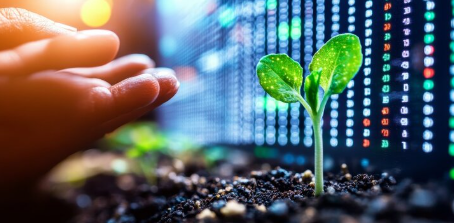
BLOG
Current and predicted effects of climate change on South Africa’s grain industry

Maize, rice, wheat, and barley are among the most widely grown grain crops in the world and are all susceptible to changing climate conditions. In this regard, the grain industry finds itself in uncharted waters in terms of the expected long-term impact that climate change may have on the industry of which most crops are sensitive to temperature fluctuations and extreme warm or cold conditions.
Agbiz Grain Quarterly called on experts in the South African grain industry to find out what effect climate change could potentially have on the grain industry, and the way forward to ensure food sustainability and security.
The information they shared centred around the following areas:
• Maize production and rising carbon dioxide (CO2) levels.
• Barley production and the malting process to obtain malted barley.
• Grain storage and pest control.
Rising atmospheric CO2
According to a study by Profs Brad Ripley and Susanne Vetter of the Department of Botany at Rhodes University, and MSc graduate Tebadi Burgess, most maize production relies on natural rainfall, making it vulnerable to changing rainfall patterns. This limitation is likely to intensify in future as climate change is predicted to lead to lower rainfall in many regions – this could decrease yields by 10% at the same time that global temperatures have increased by 4°C. Droughts are also predicted to become more frequent and severe, while warming will lead to increased evaporation and plants losing more water.
However, predicting what effects a changing climate will have on crop yields is difficult. This is because the effects of rainfall and temperature can interact in complex ways. Rising atmospheric CO2,which is a result of industrialisation, only adds to the uncertainty. And, as the authors’ research conducted in South Africa shows, it may offset some of the impacts of drying and warming on maize crops in tropical growing regions such as those found in much of Africa.
In 2018, Rhodes University launched Africa’s first large-scale elevated CO2 plant research facility. Six different maize cultivars bred for South African climates were exposed to drought and watering treatments under ambient and elevated temperatures, as well as elevated CO2. Plants were grown over the summer season and were either irrigated daily or left to grow with only the little rainfall that fell naturally. The study area has too little summer rainfall to be a viable maize growing region; this allowed for the stimulation of drought effects under hot and dry summer conditions.
To examine the effect of atmospheric CO2, current conditions of 400 parts per million (ppm) were compared to those predicted to occur towards the end of the 21st century (800 ppm). The air temperature in the open-top chambers was 4 to 5°C higher than ambient, which is in line with future climate predictions.
Click here to read full article by Carin Venter.

0 COMMENTS
LEAVE A COMMENT